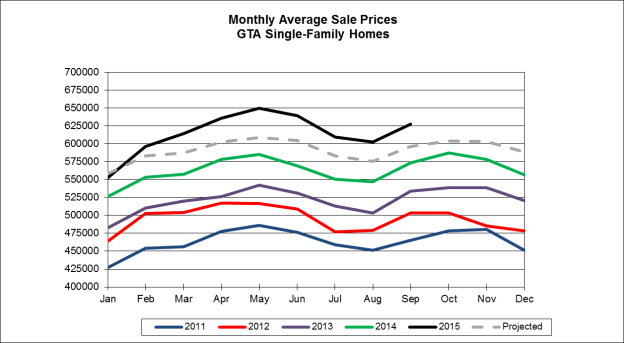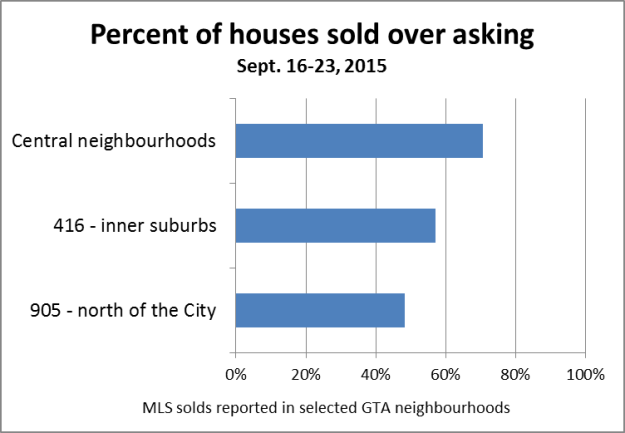
This winter we were advising clients who really wanted to sell their Lawrence Park home in the spring. They had bought a new home outside the city and were counting on moving their family during the summer, between the school terms. Our original plan had been to bring the listing out in May, which is statistically the height of the usual Toronto spring market. But as we got to the end of February, storm clouds were beginning to gather… so the clients’ questions started coming quickly. Do we stick to the plan? Or move to get the listing on immediately? Or simply wait it out and see what happens?
Preparing the house
Part of the challenge was that the clients needed several weeks to get their house prepped for sale. Boxing up contents, cleaning up the yard when winter was still hanging on, getting painters in to freshen up all the rooms. And then the further work of staging, photography and videography, floor plans, and home inspection. Without doing all these steps, their house would not look its best, and would have sold for less.
Together with the clients, we made a joint decision to list at the earliest possible moment. Everyone flew into high gear, and at the end of the third week of March the house was ready for prime time. Of course, by this point the social distancing rules and business shutdowns had been implemented. Buyers and their agents would have to sign disclaimers, and wear masks and gloves. We were going to put on a listing, but would anyone come?
The selling process
What we saw was that the real estate market had suddenly shifted from fast forward to slow motion. We learned to measure time in weeks instead of hours or days. Even with a stunning video on MLS and Realtor.ca, and sending hundreds of emails to likely agents, it took almost a month for the right buyers to connect the dots and make the big decision. In the end there were multiple offers, by the coincidence of different buyers getting to the same point at the same time. The result? We made two families very happy and thrilled to be getting on with their lives – which might otherwise have been put on hold.
A friend asked us how selling a house was different during the pandemic. One thing that really became evident was the importance of personal contact. Not the face-to-face kind, but personal conversations with other agents – emailing, texting and even talking together on the phone! Each one of our showings required a form of negotiation, to make sure the buyer clients were up to speed, not just on the health protocols, but also on the features and details of what they were going to see. So we spent hours talking with agents, prepping for each showing. On the flip side, we had all our information and media prepared, so that the buyers had reviewed the photos, virtual tour, home inspection, floor plans, etc., before the actual visit. Without all this painstaking work, a positive outcome would have been very unlikely.
How is the market today?
At Sage, we get a weekly update on real estate traffic in Toronto. Tracking the nuts and bolts – how many showings booked each day, how many offers registered, how many new listings are going on the MLS (or exclusive). This information has allowed us to track not only the effect of the Covid shutdown on real estate market, but also the day-by-day changes in consumer activity. Where do things stand today? After a dramatic transition in late March (down to about 15% of regular activity), activity has been creeping up slowly, week by week. As expected, price levels have pretty much held firm. Bidding wars have been more sedate than usual, due to fewer participants, but there is a strong, pent-up demand for housing. Even during the shutdown, thousands of buyers were scouring the online listings to see if the perfect home might be out there.
Toronto’s economic growth has historically been based on two foundations: employment and immigration. In the 21st century, Toronto has quietly become one of the world’s great cities. People want to live here, to work in the tech sector, and in all the knowledge industries. Immigration may be paused, but it will resume soon enough. And as the construction industry well knows, there is already a pressing need for more housing in the Toronto area. All these factors point to a strong real estate market. As more listings come out, buyers will be ready for them.
Want to talk about your house?
As experienced baby-boomer agents, we’ll provide honest advice on when and how to list your house. We’ll provide the latest data, and discuss the best strategies with you. We relish challenges, we like to share, and we’re available to help… You can email us, or ask for James and Joanne at 416-483-8000.










